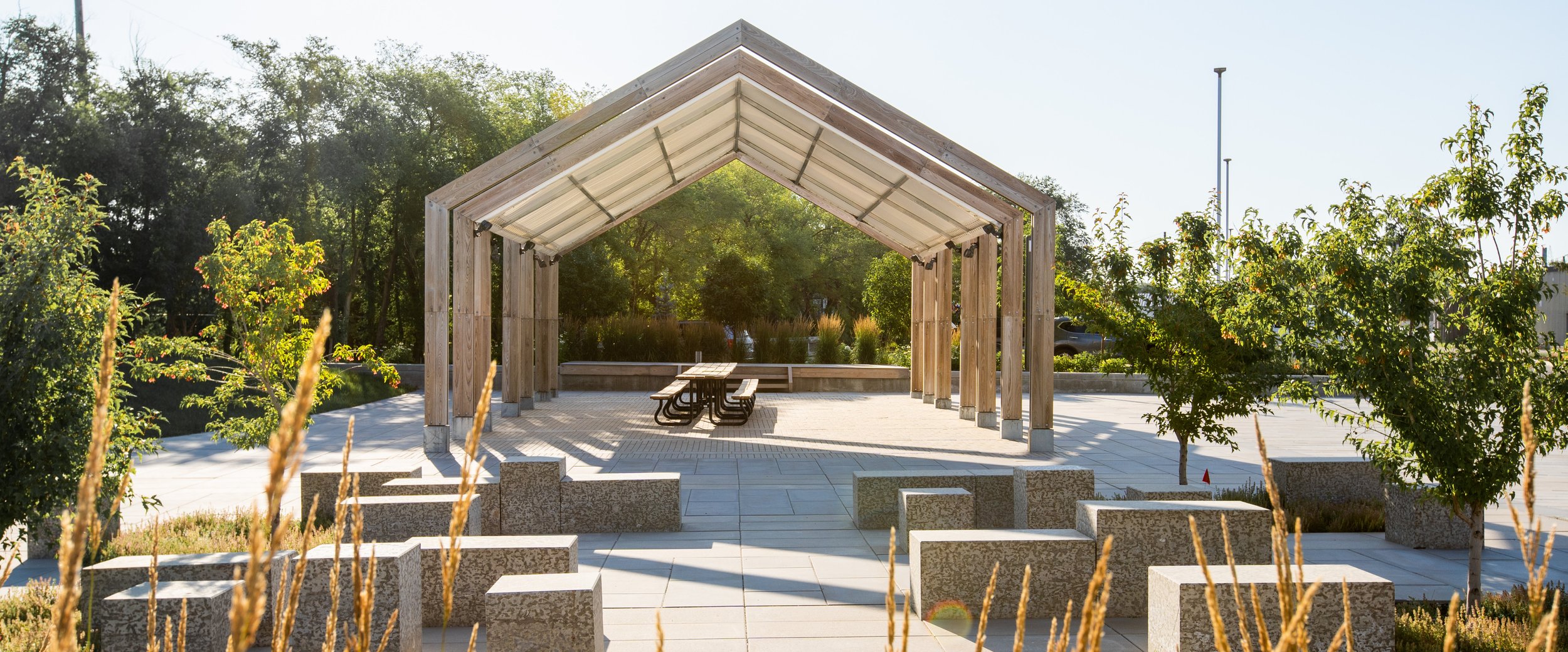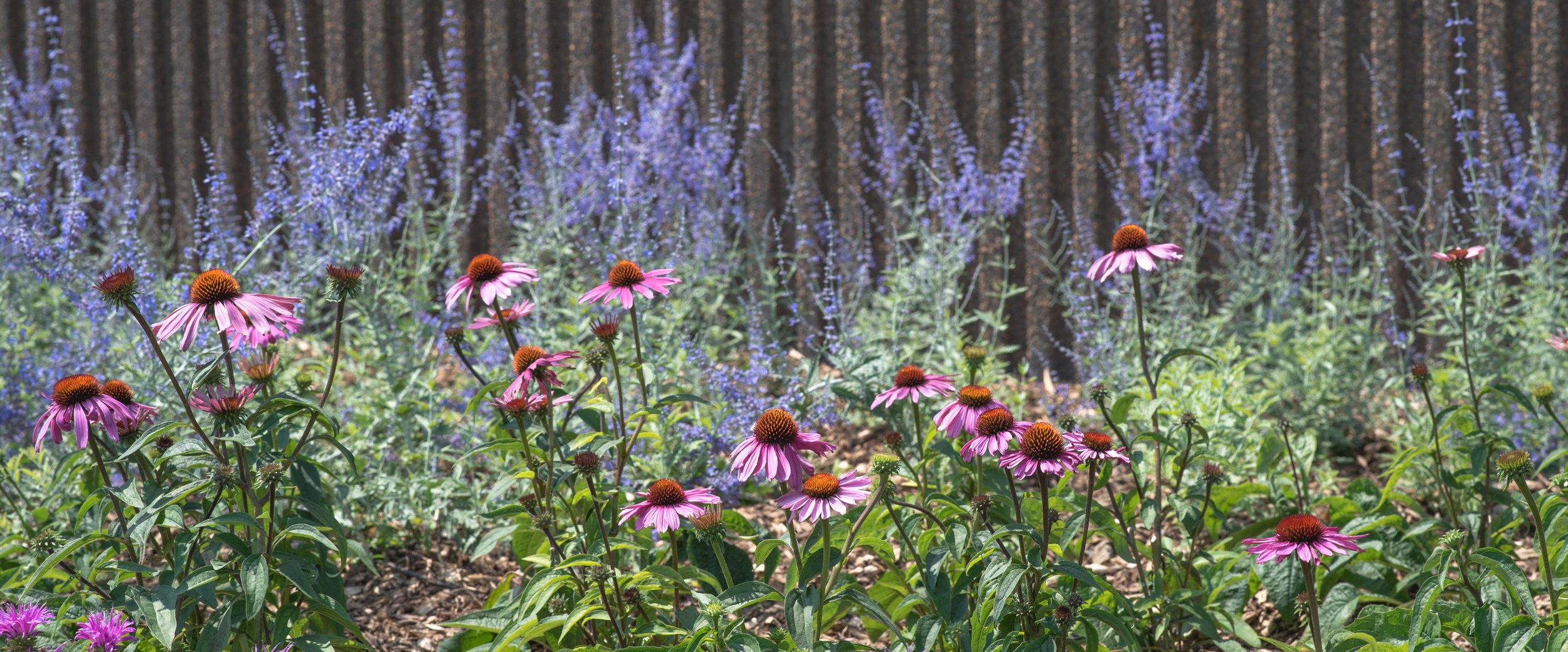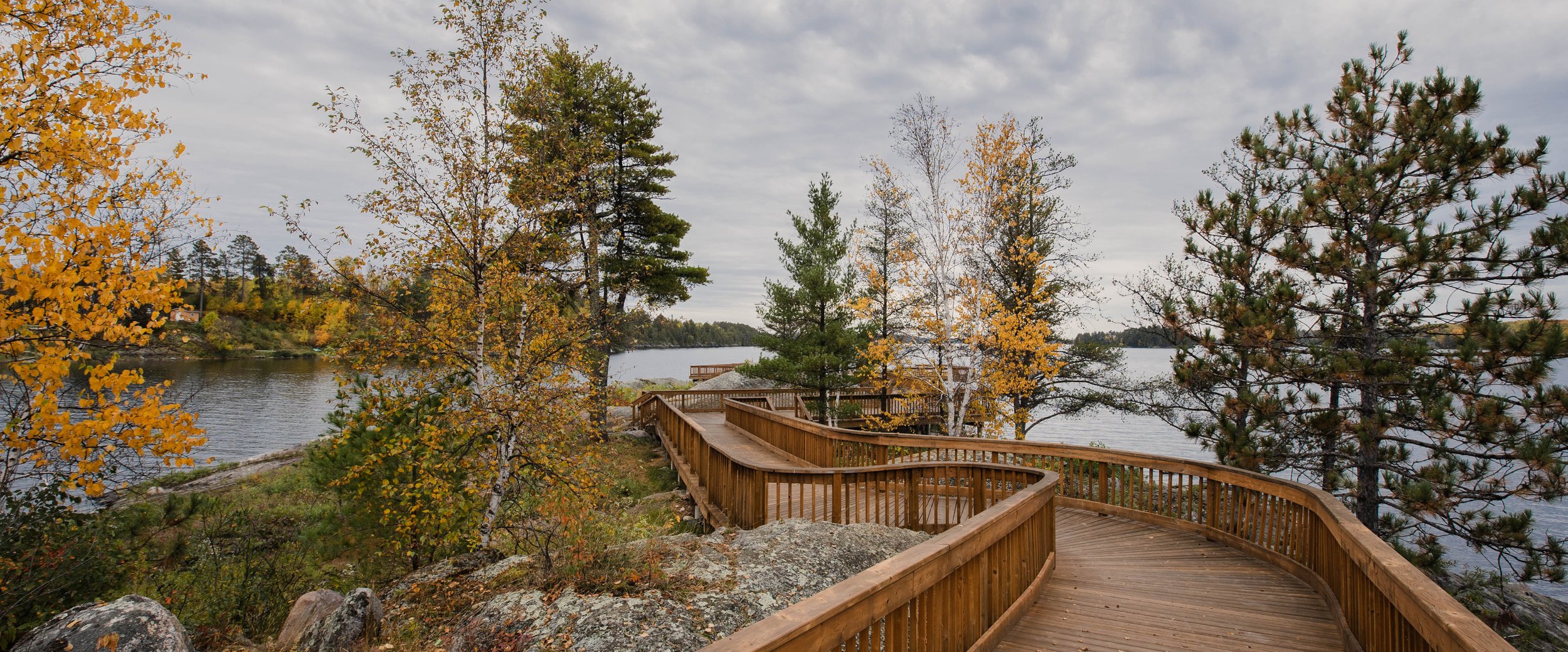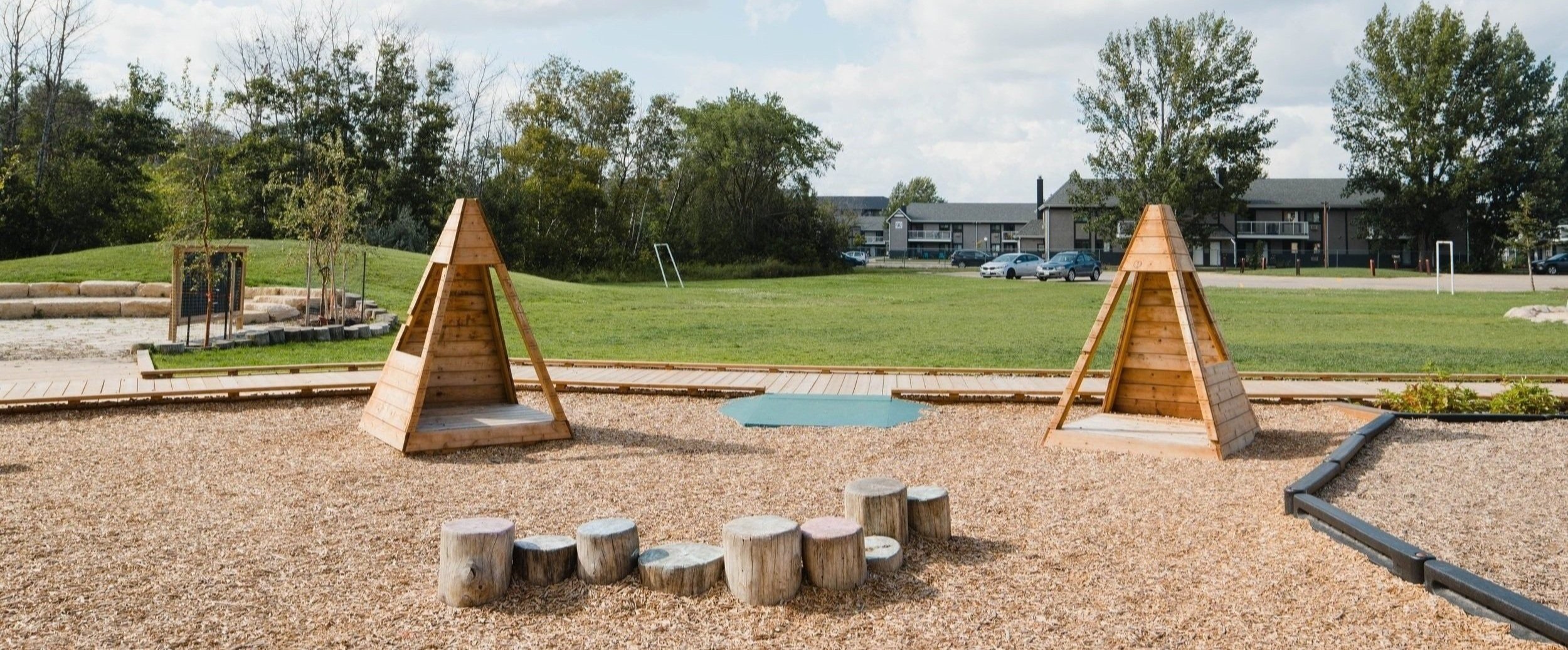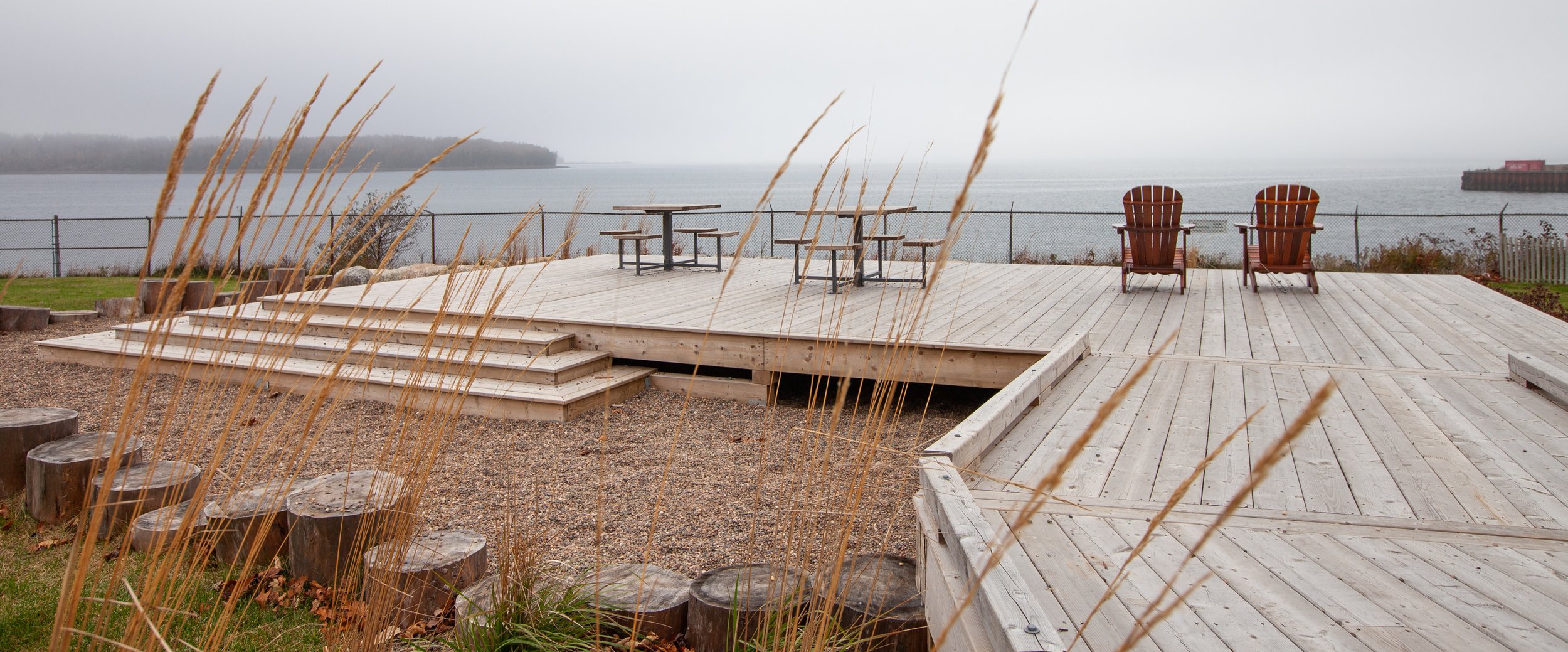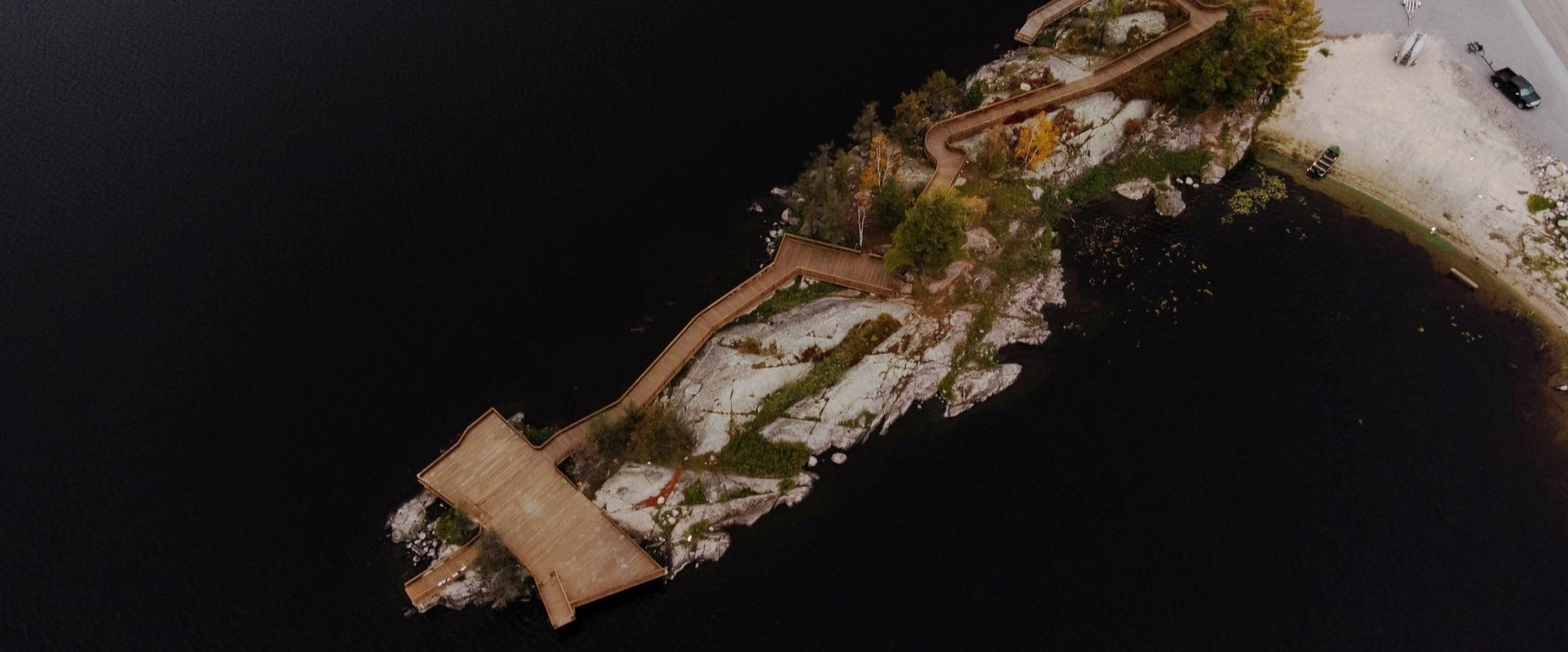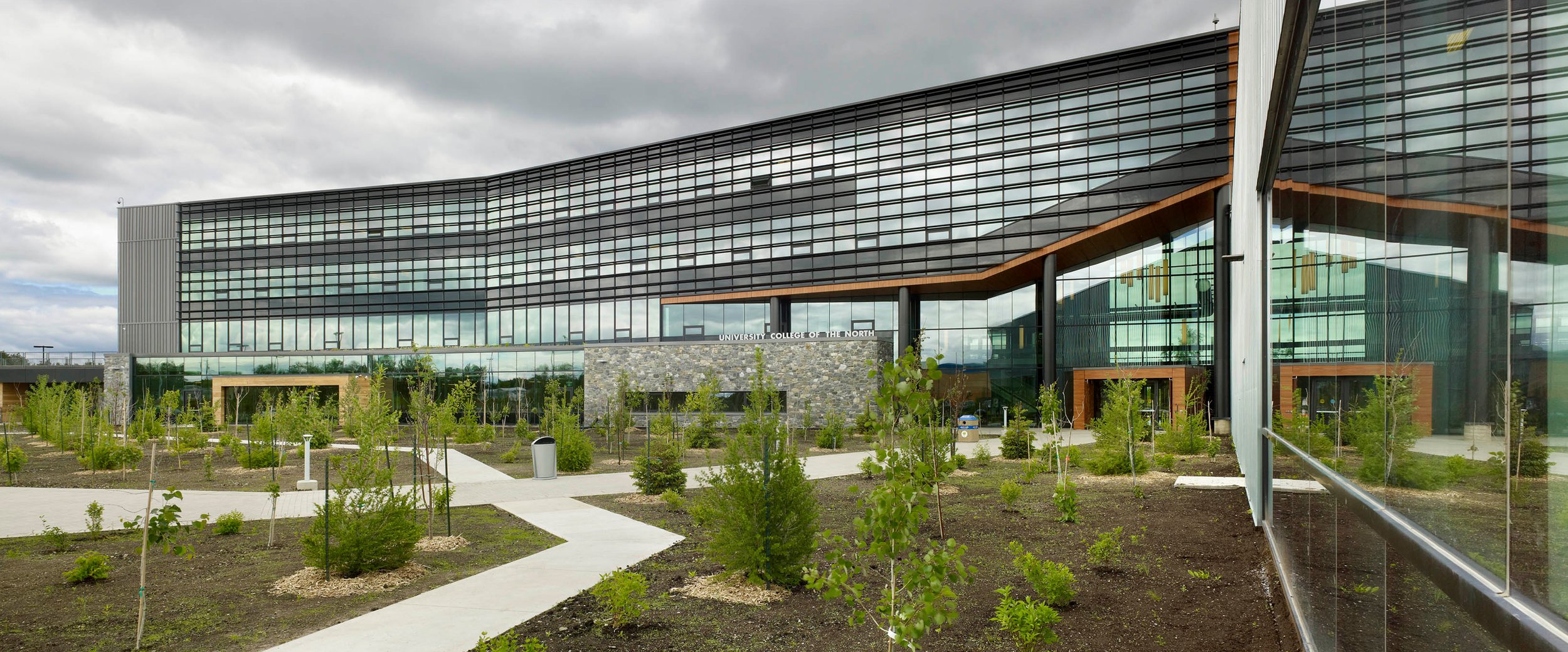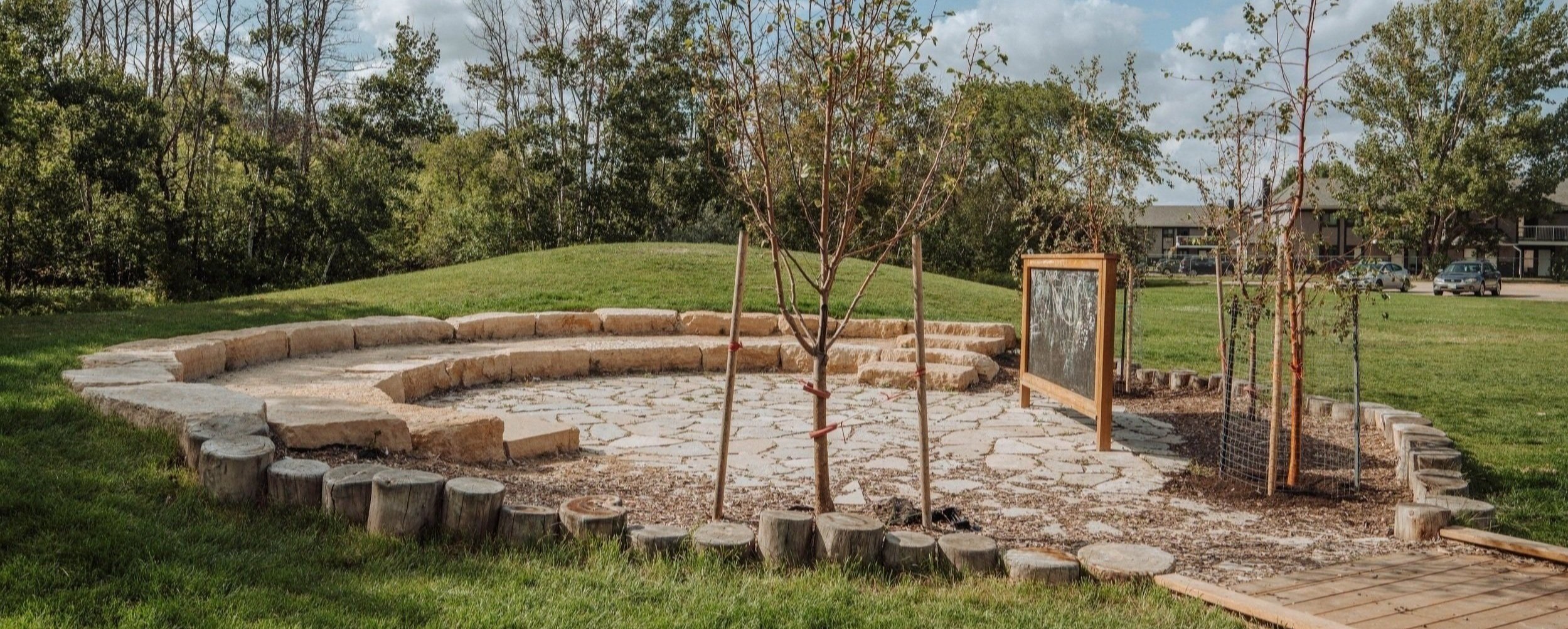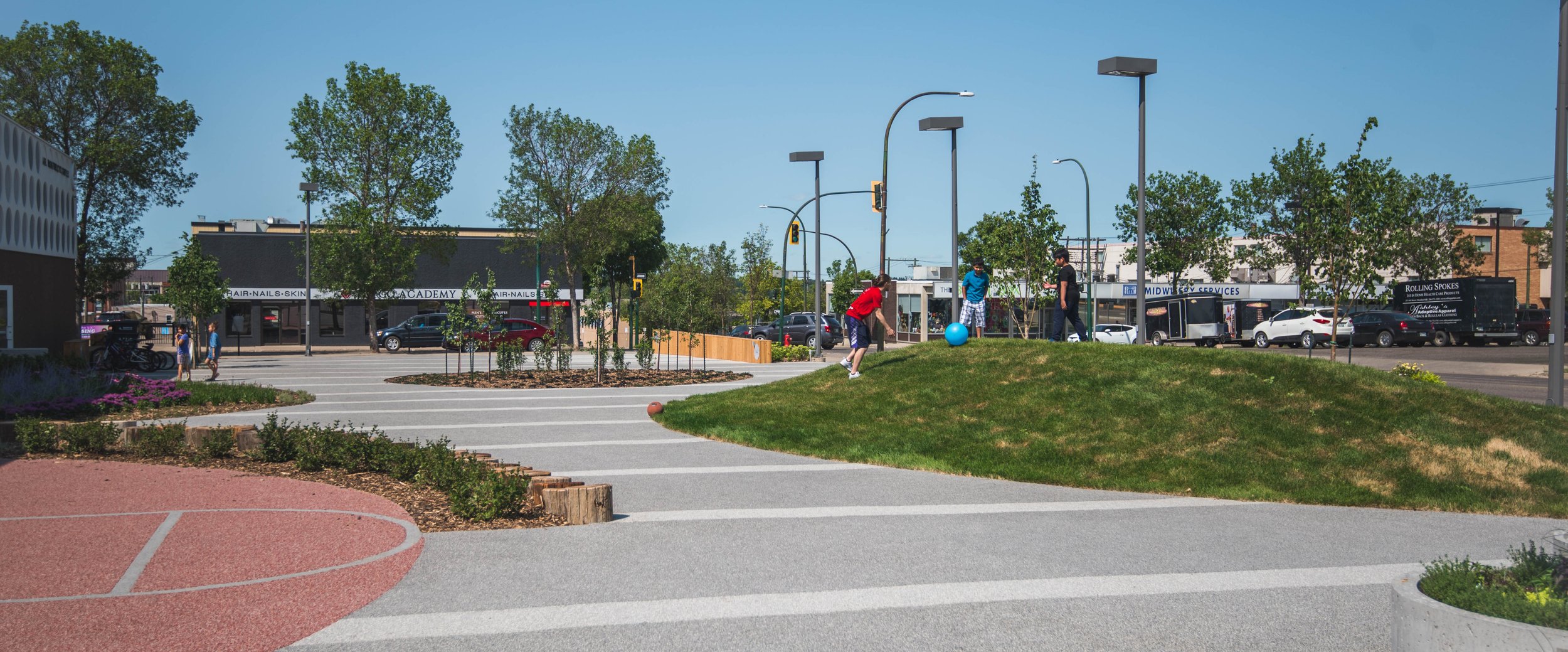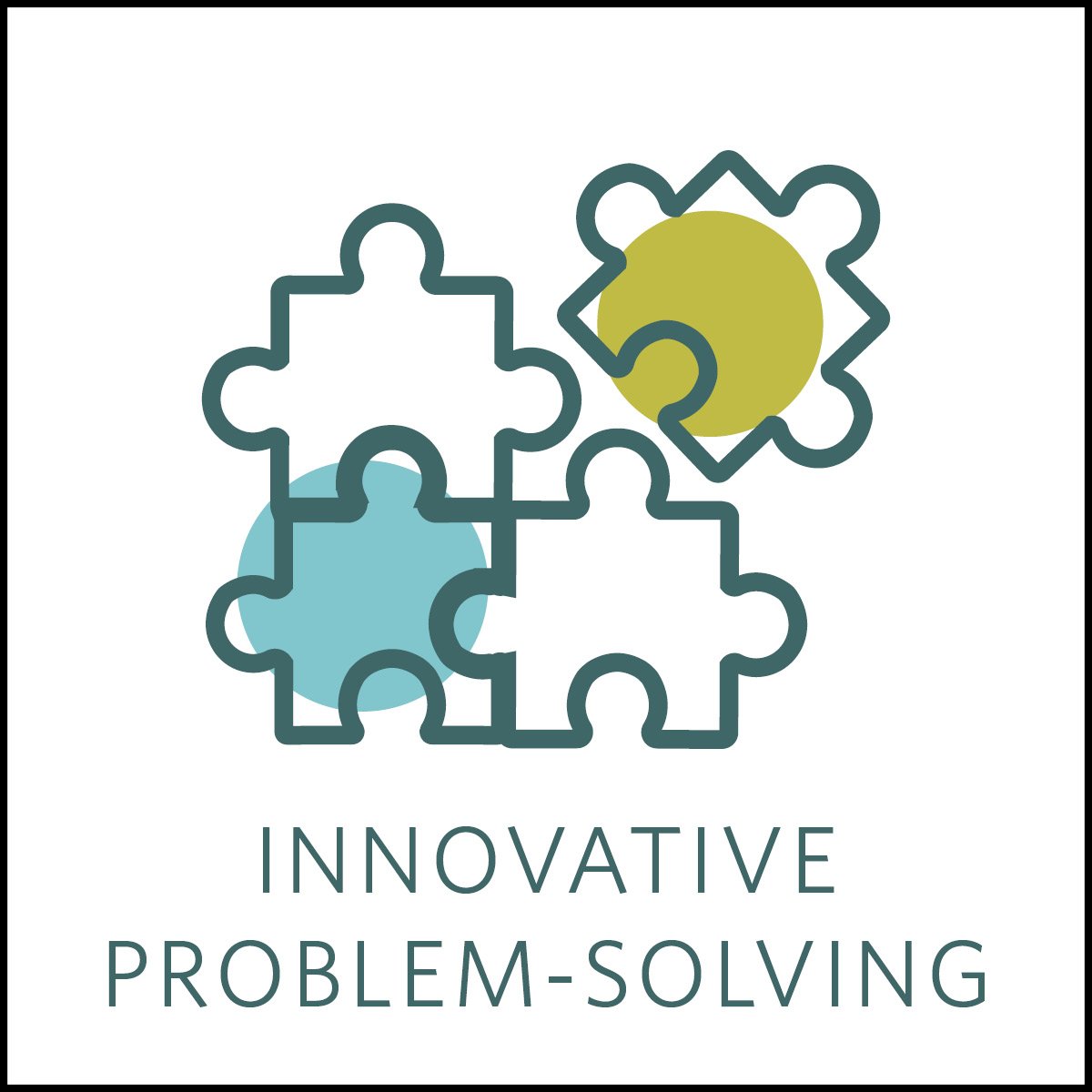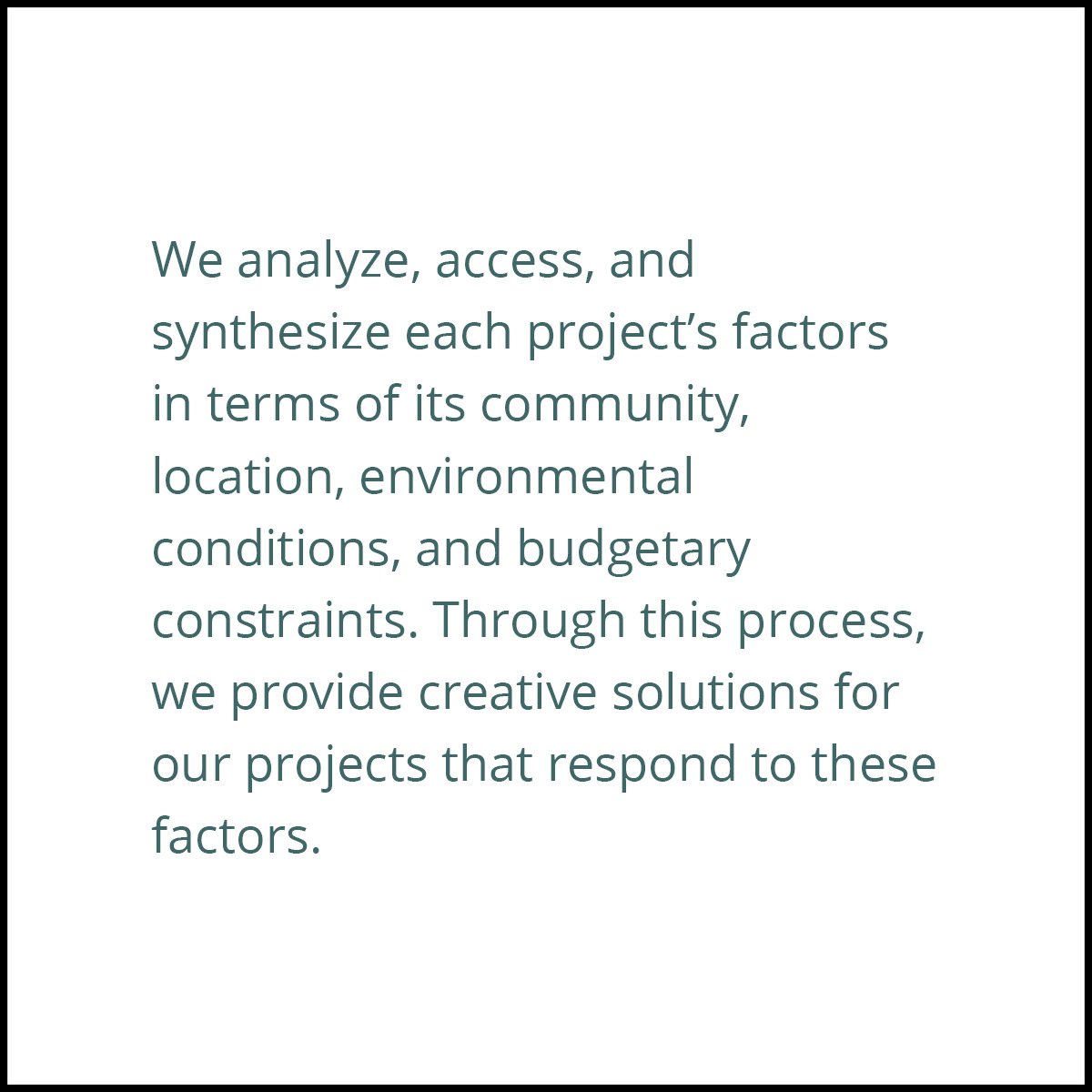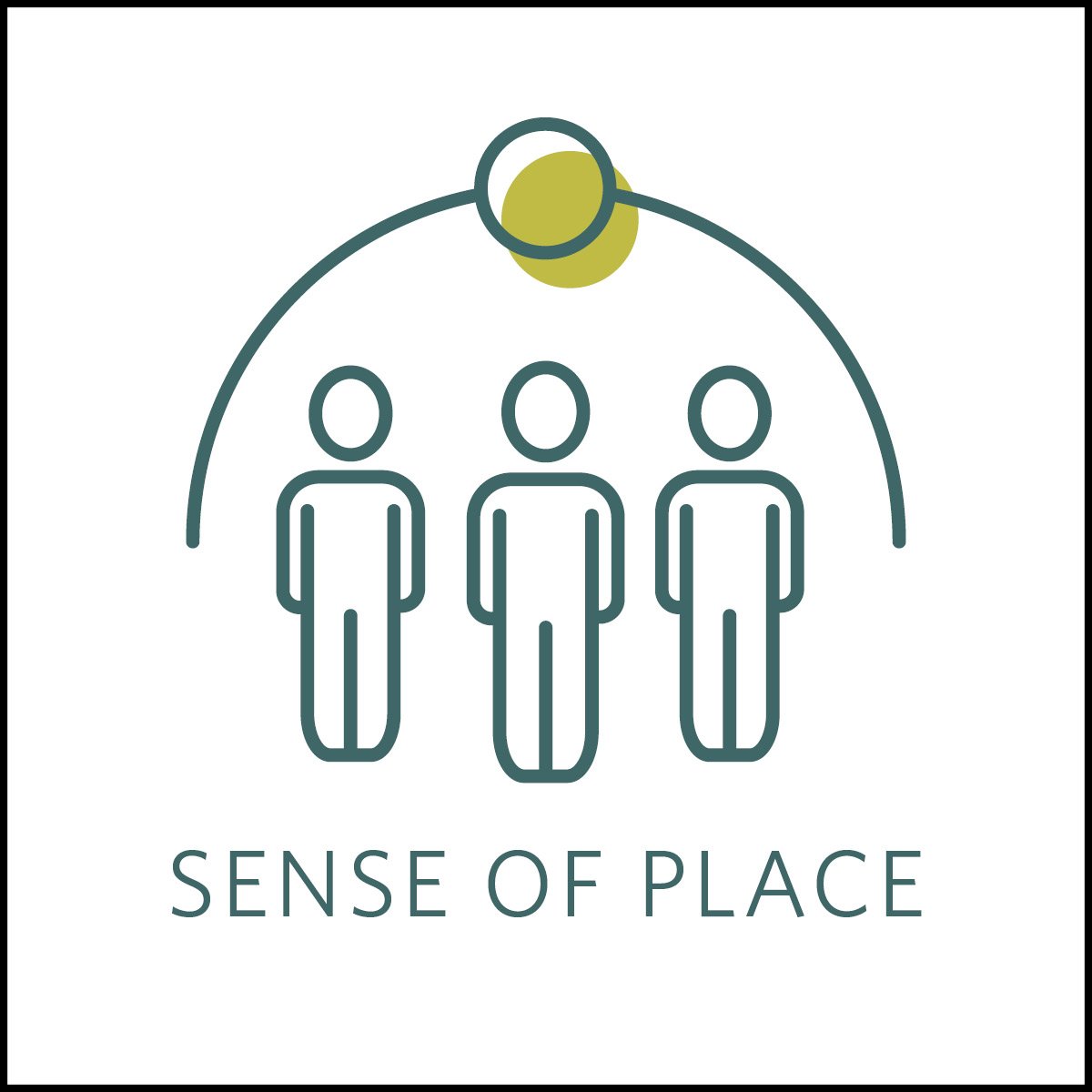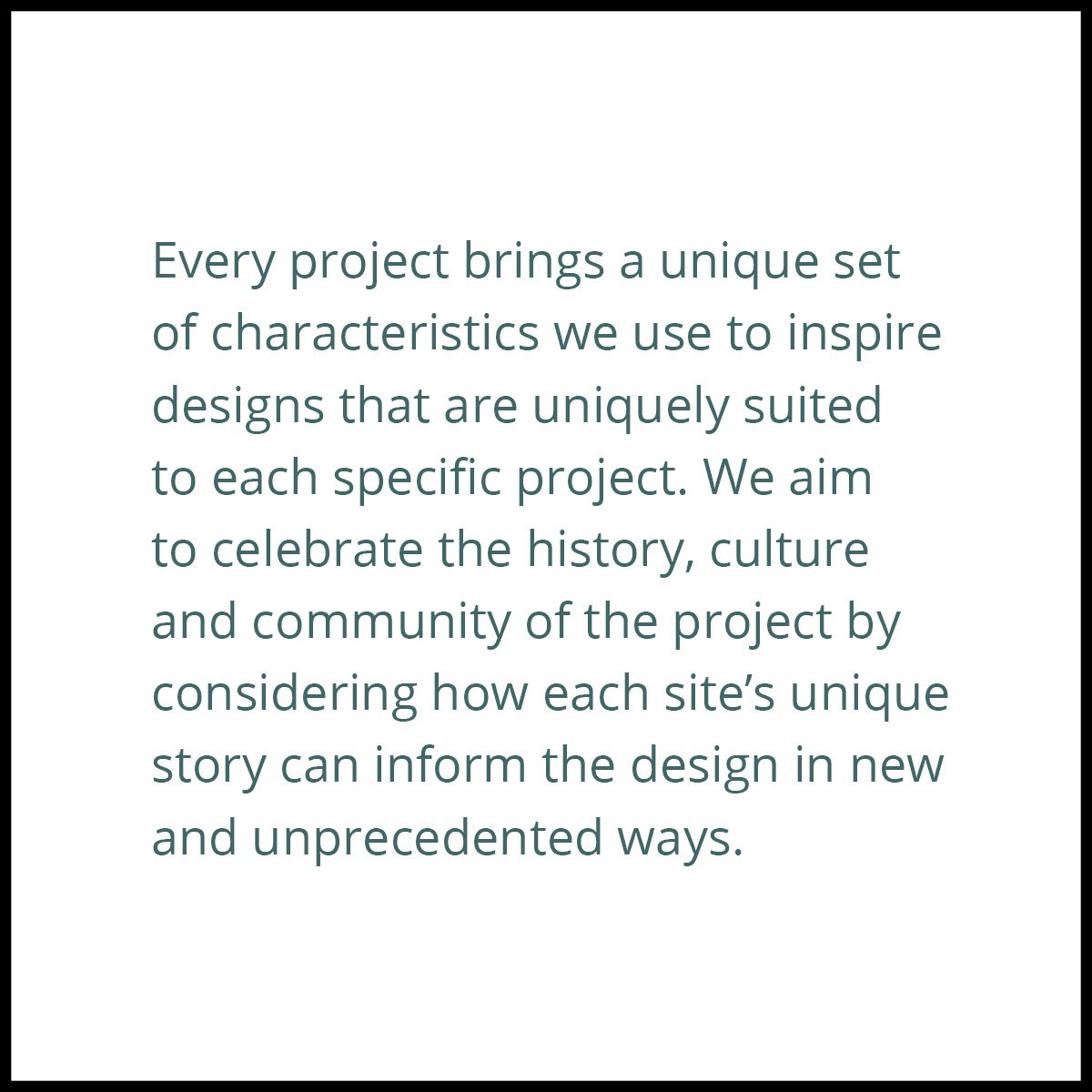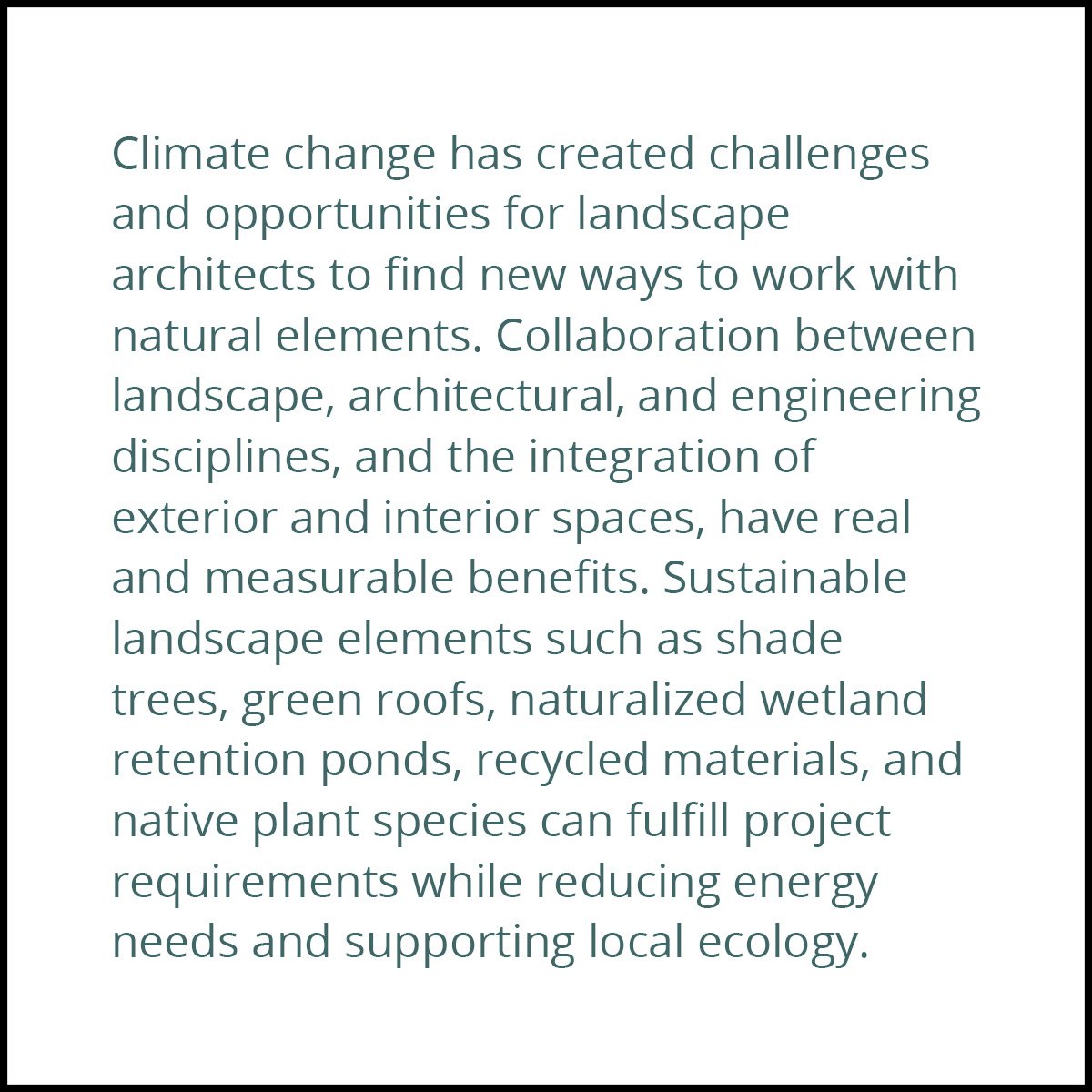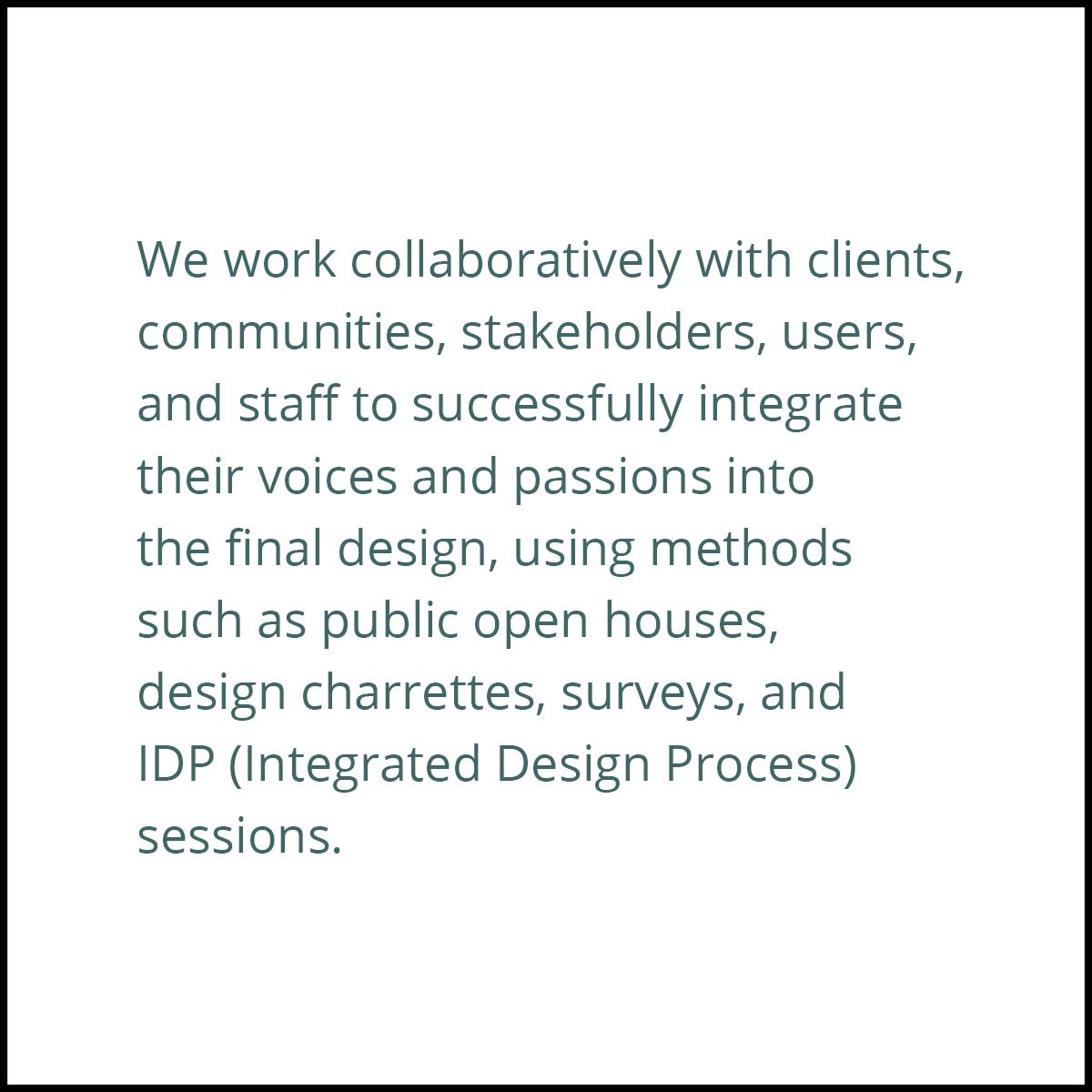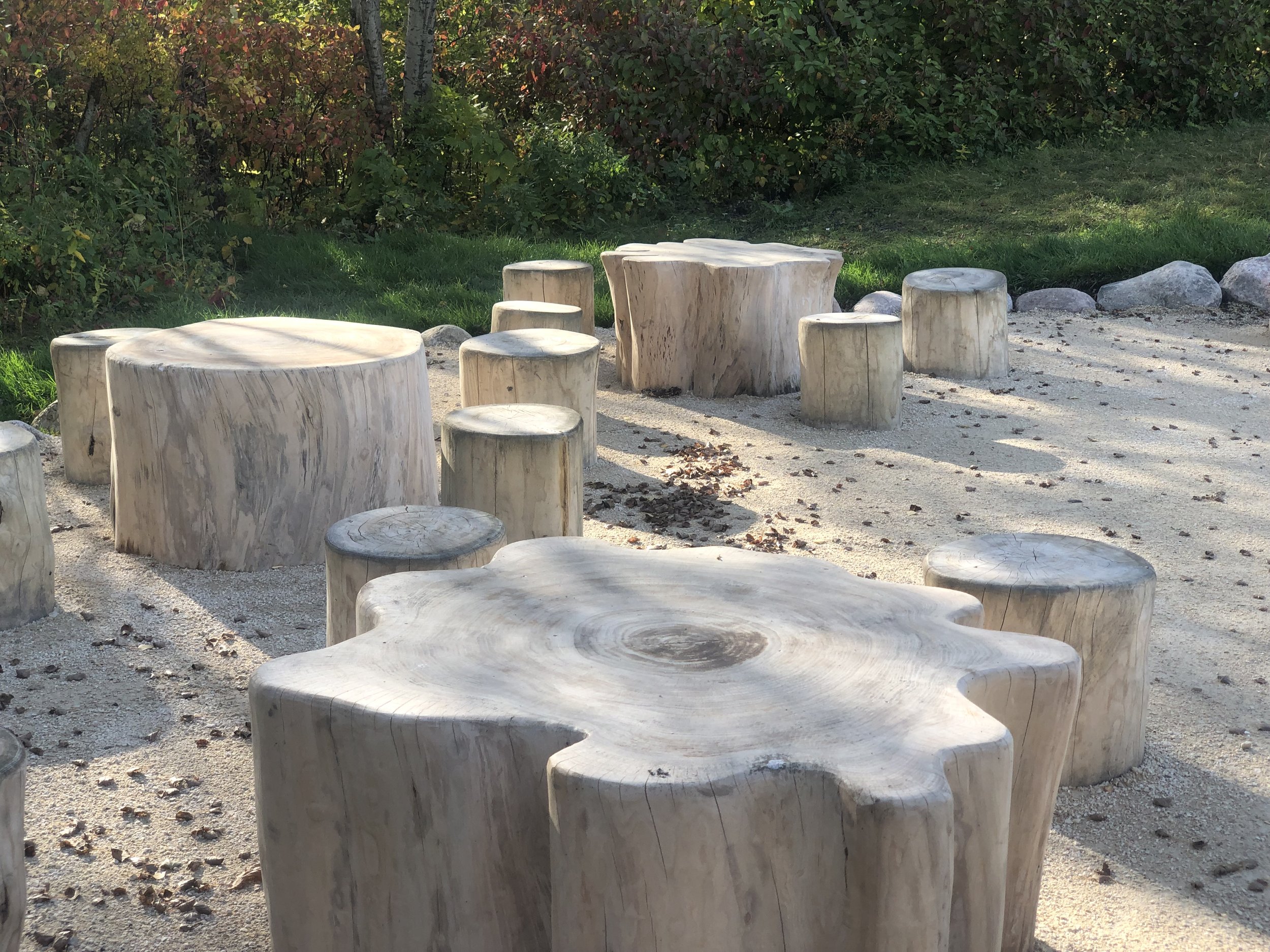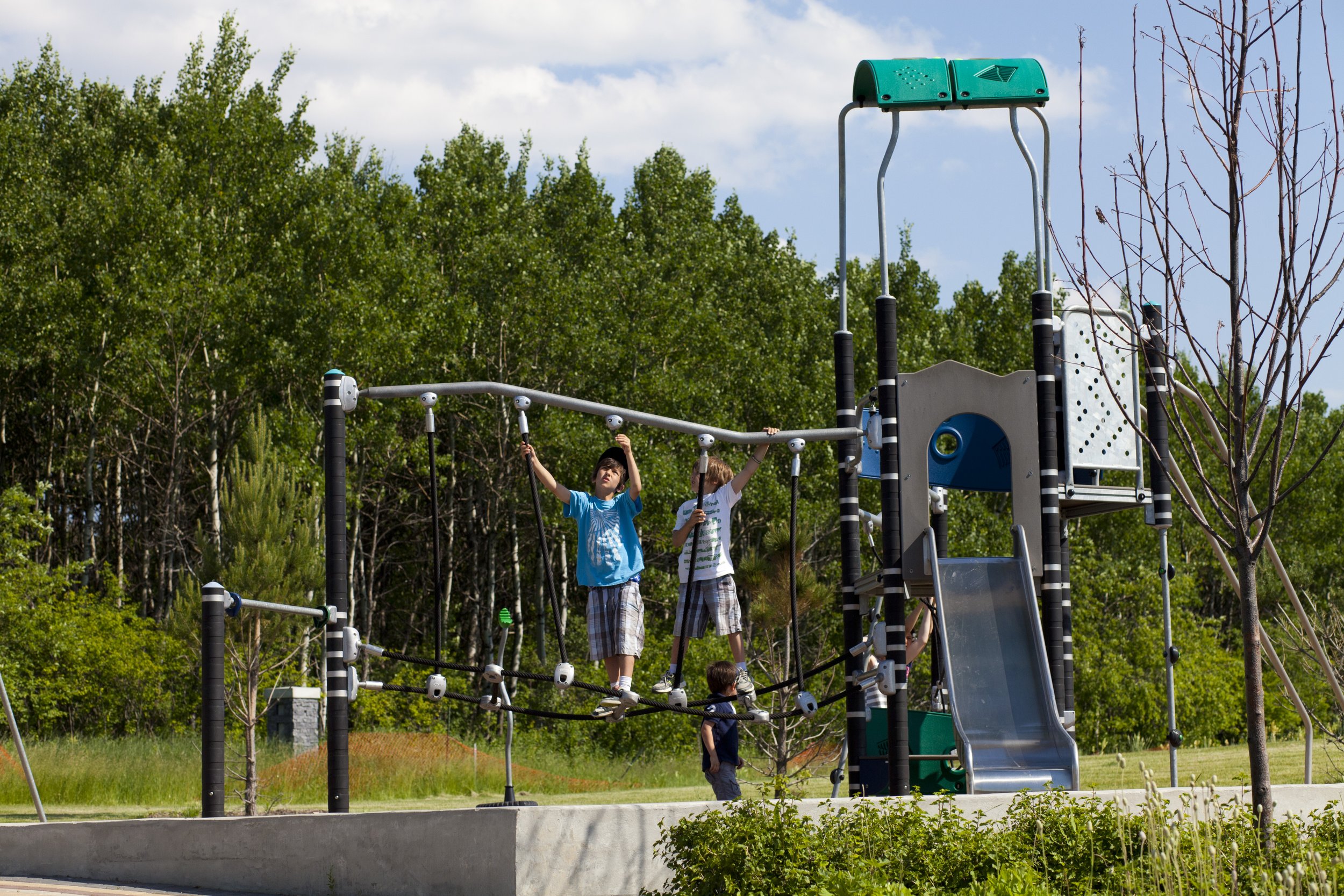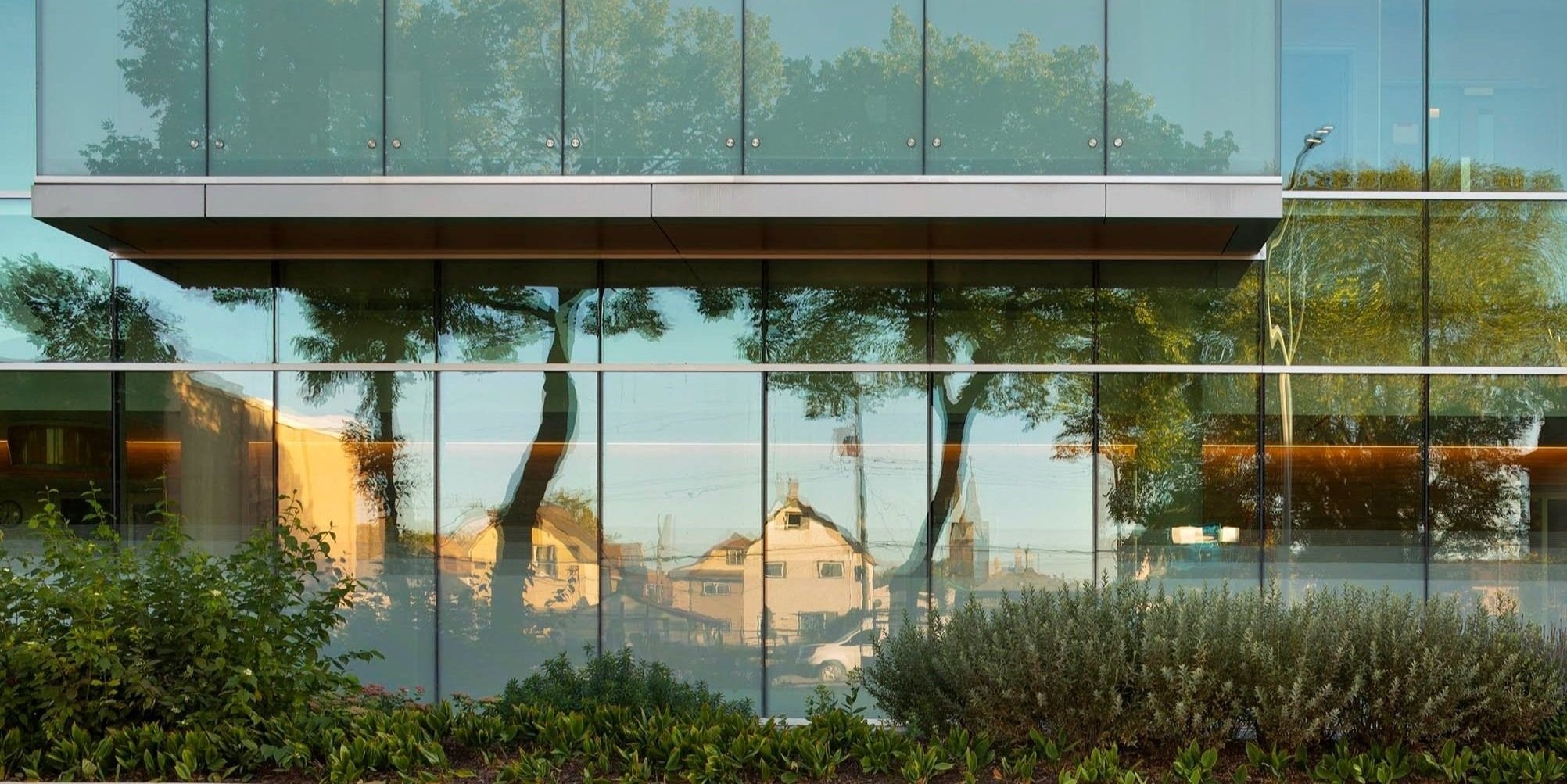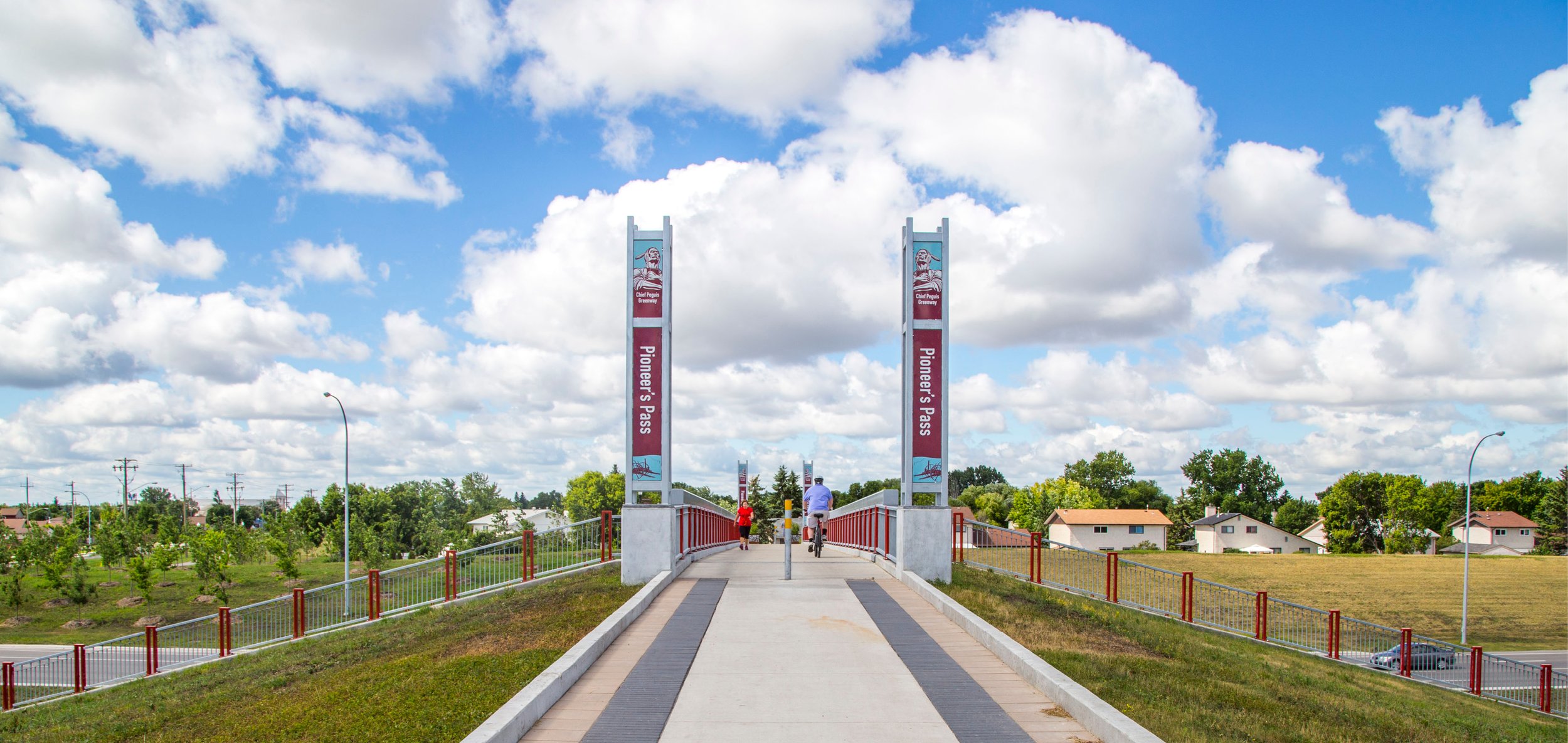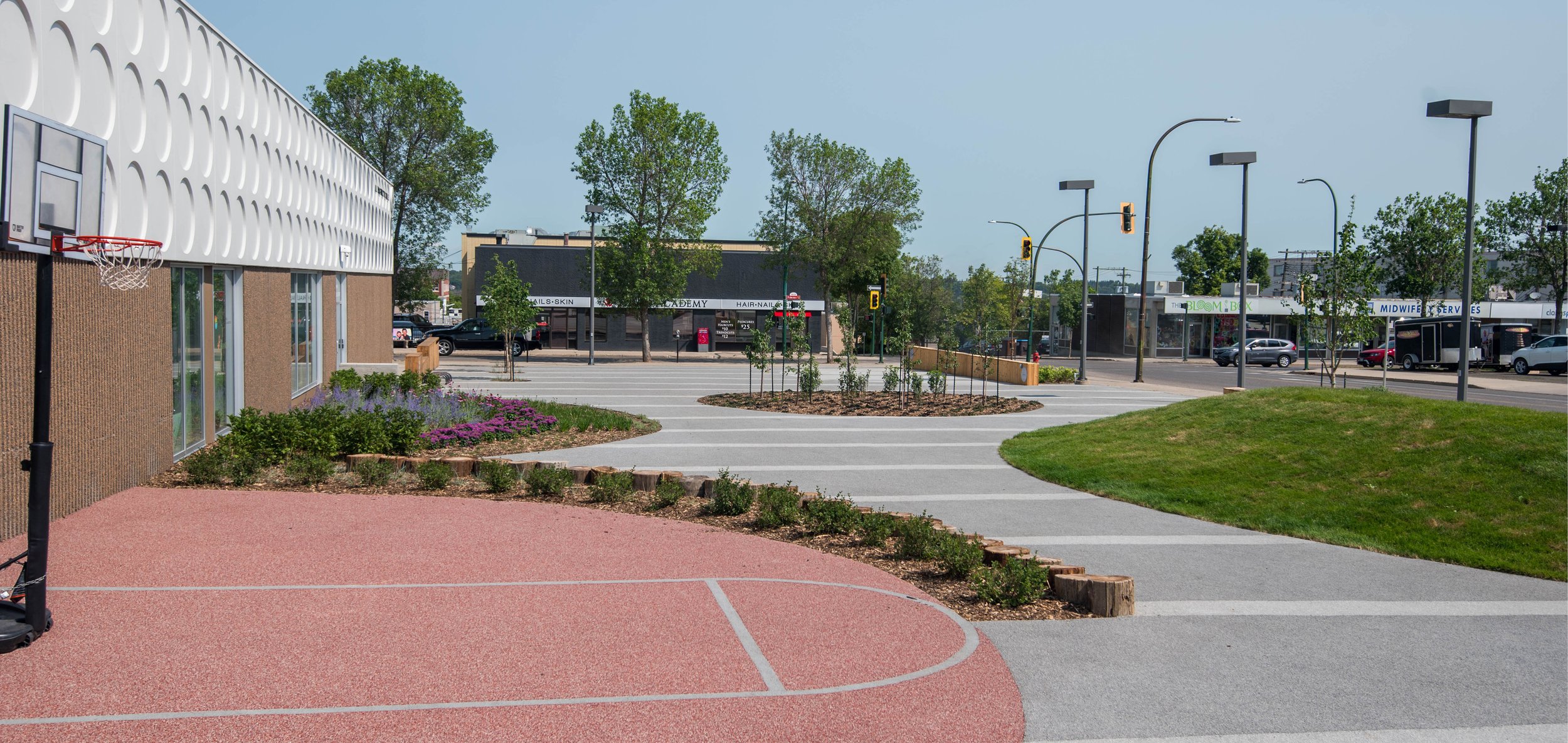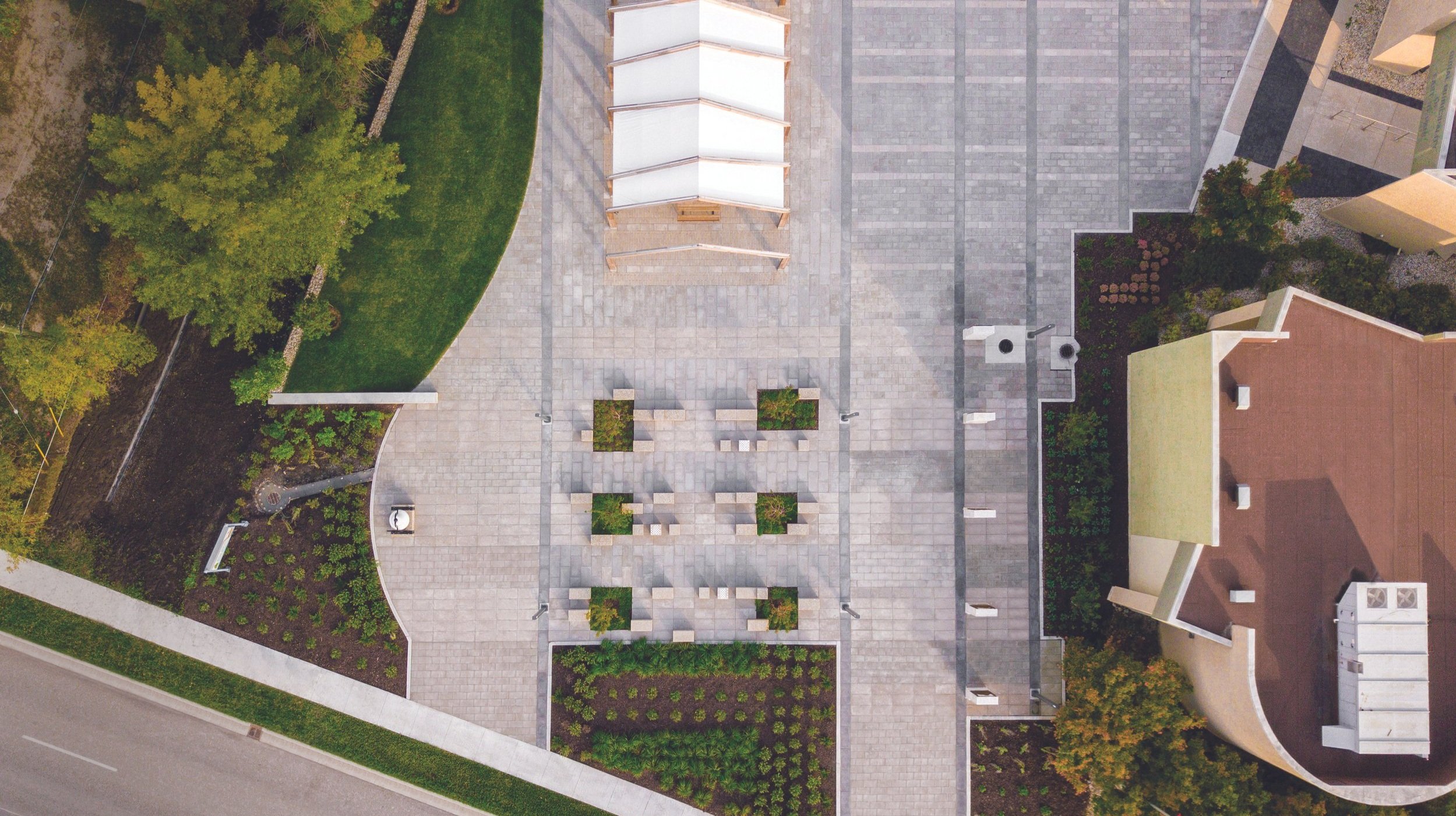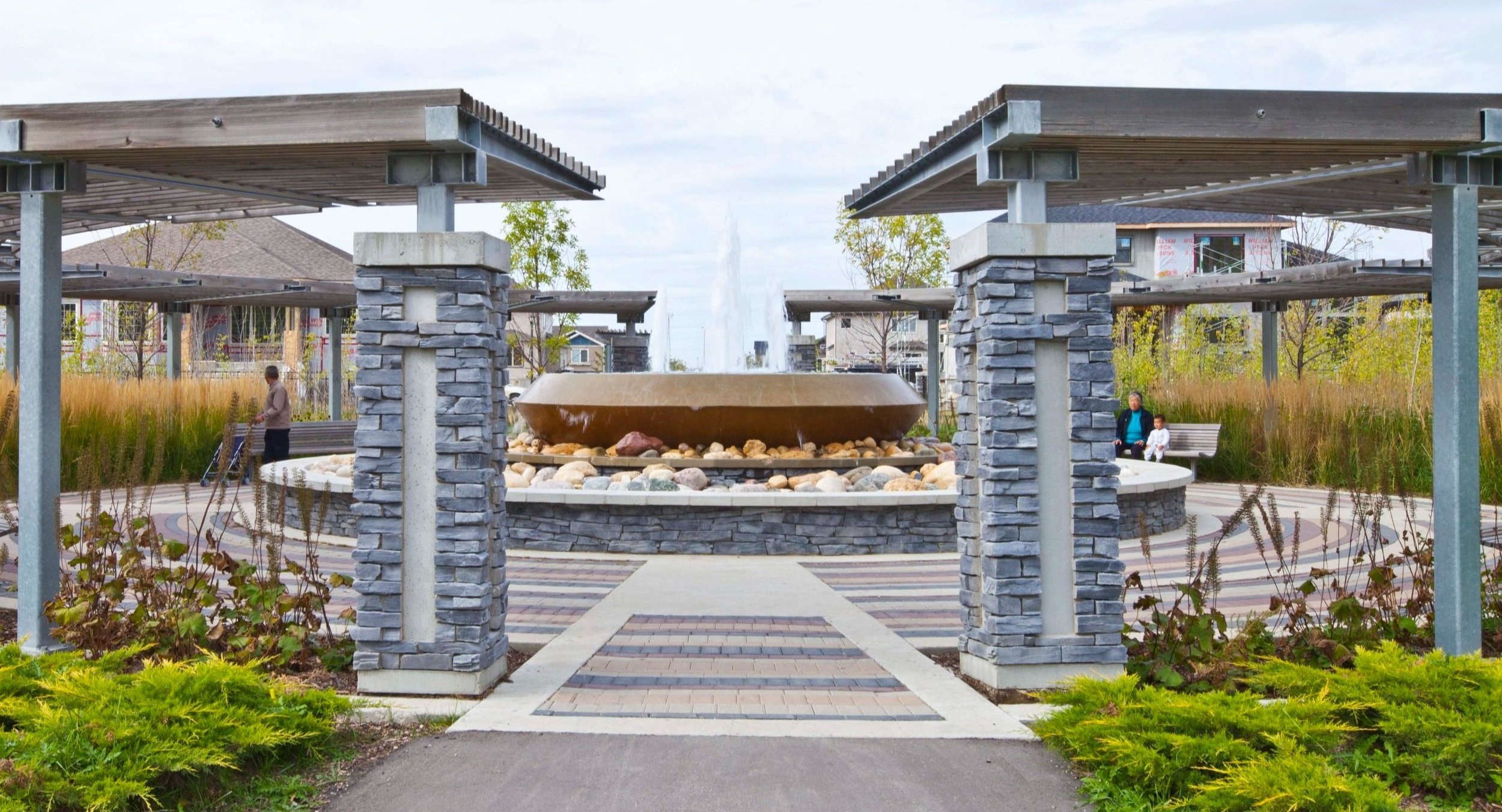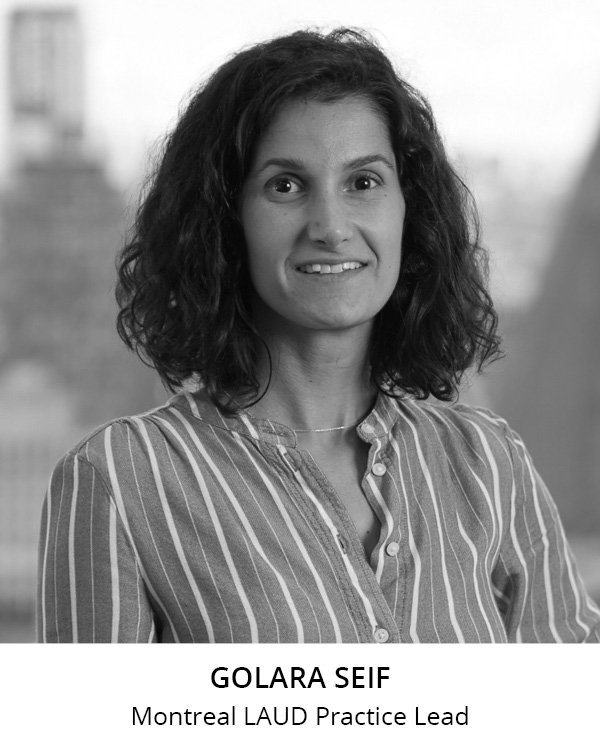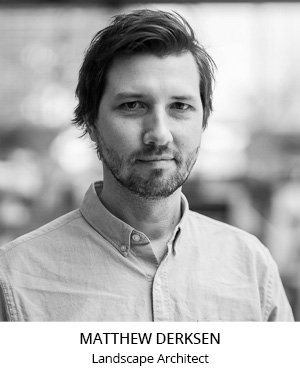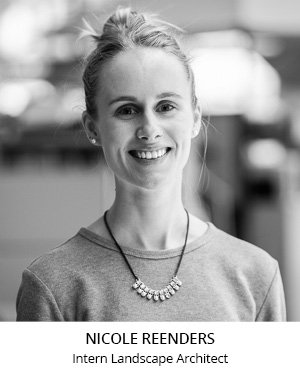Landscape architecture & Urban Design portfolio
“Our vision is to design captivating landscapes that seamlessly integrate nature and design, harmonizing the built environment with the surrounding ecosystem. With an unwavering commitment to sustainability and innovation, we strive to create vibrant spaces that inspire, engage, and leave a lasting impression.”
Well-designed landscapes and urban spaces have transformative abilities: they can provide opportunities to create icons and landmarks that invite and unite communities.
By understanding how people interact with and within these spaces, and by engaging in the practice of collaborative design, our Landscape and Urban Design department creates inspiring spaces that elevate the health, social vitality, safety, and sustainability of our communities.
Centennial Plaza, East St. Paul, Manitoba
Principles and Elements of Excellence in Landscape Design
Bridgewater Forest Development, Winnipeg, Manitoba
Areas of expertise
Play & recreation
Play is an important part of an active and vibrant community. Landscape elements such as playgrounds, sports fields, splash pads and pools, outdoor exercise equipment, trail systems, community gardens, and sensory gardens provide opportunities for communities to learn, play, and interact.
Many factors influence the use and success of a playground, and consequently, they require careful design. The planning, layout, and design of features and equipment can encourage children to be more active and curious about the world around them. Playgrounds should also offer diverse spaces – access to sun and shade, places for solo play and group play; as well as equipment that supports a wide age range. Safety and accessibility are essential for any well-designed play area, but need not limit opportunity.
“When we watch children play, we understand how central play is to healthy development — to children’s emotional, social, and cognitive health and learning. Through play and hands-on activity, children build ideas and relationships that become the foundation for success in school and life.”
Healing Spaces
Healing is a complex and multifaceted process involving the mind, body, and spirit. If healthcare is committed to human-centered care and the healing of the whole person, then landscape and architecture must speak this language as well. Landscape-based therapeutic environments, such as welcoming entrance plaza, a sunny rooftop garden, a lush green wall, or a calming sensory garden can support the healing process by providing opportunities to retreat, relax, reflect, play, socialize. Careful attention to the qualities of materials, such as the warmth of wood, the coolness of stone, the sound of trickling water, or the scent of lush foliage can engage the five senses to promote relaxation and healing. Incorporating holistic healing environments into healthcare facilities promotes well-being for patients, family members, visitors, and healthcare staff alike.
HSC Winnipeg Women’s Hospital, Winnipeg, MB
In the midst of illness, the beauty of nature has the ability to uplift and restore. Therapeutic gardens provide a sanctuary for healing, where patients can find strength, hope, and a renewed sense of connection with the world around them.
Urban places
Public urban spaces, such as parks, plazas, and sidewalks, significantly impact the urban experience, instilling pride, fostering a sense of belonging, and ensuring safety and accessibility. They are crucial in cultivating vibrant communities, much like houses becoming cherished homes. By incorporating architecture, landscape architecture, and urban design, these spaces contribute to the resilience and vitality of the urban fabric. Strategic design is essential due to their visibility, traffic, and influence on communities. Understanding the site's context and connection to its surroundings is crucial, as is community engagement and collaboration. Inclusive design practices ensure accessibility, safety measures, and aesthetic quality. Well-designed urban places balance these factors to create meaningful spaces for the community.
Landscape Architecture and urban design Team
Contact
Bhavana Bonde, OALA ,AALA, BCSLA, MALA, SALA, APALA, CSLA, LEED AP
Practice Leader, Landscape Architecture and Urban Design
Bhavana.Bonde@architecture49.com | +1 204.259.1464
